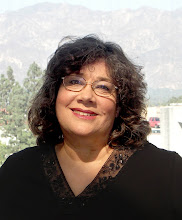
Yesterday morning when I opened my front door to go to work, the air was so crisp and clean, the grass was so green from the rains and the mountain was so beautiful that I quickly took out my camera and snapped a shot.
I live in an 1,100-square-foot house on a 10,000-square-foot lot, and the house is set all the way at the back of the property. All of the properties on my block are zoned R-2 (two residential structures per parcel), but mine is a rare one that doesn't have a second house on it.
That allows for the park-like yard with the huge sycamore and two Deodar cedars all lined in a row, with the mountain as a backdrop.
I don't know when the trees were planted, but they're definitely mature. The house was built in 1922.

Over the 20 years I've lived here, some friends and neighbors have pressed me to build a duplex in front of my house as an income property. But then my view would be the back side of a duplex. And the cedars would have to go.
I work long hours, and sitting on my front porch every morning to sip tea and enjoy the view is a big part of my quality of life.
I water some plants but I almost never water my lawn. It's pretty big, so watering is an expensive proposition. Therefore, thankfully, my water bill from PWP is very low.
Hey, remember that Pasadena's cool-season lawn and landscape watering schedule kicks in on Monday, Nov. 1. It's a mandatory cutback! More info here.

UPDATE: I shot this photo at 7:00 this morning when I was sipping tea on one of the rocking chairs on my front porch. This view, or the back side of a duplex? I'll take this one.























.JPG)













